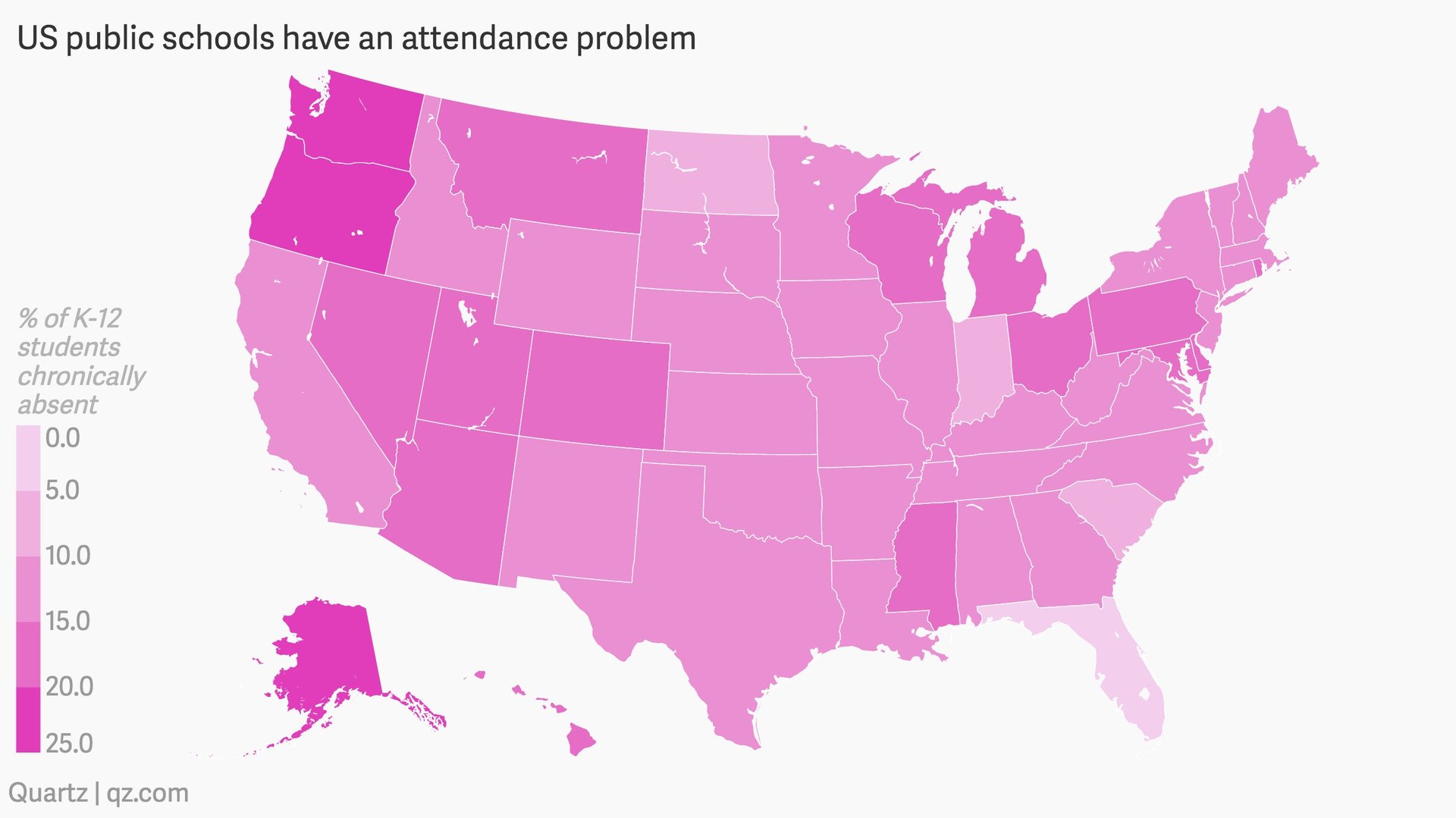Mapped: The students missing from America’s schools
Debates in education often have to do with insufficient resources, whether it be the proper materials, the teachers, or the time to ensure quality learning for all students. Of course, those issues don’t arise if students themselves don’t show up—as is the case in much of the US right now.


Debates in education often have to do with insufficient resources, whether it be the proper materials, the teachers, or the time to ensure quality learning for all students. Of course, those issues don’t arise if students themselves don’t show up—as is the case in much of the US right now.
According to a huge swath of data (pdf) released this week by the US Department of Education, roughly 6.5 million students, or a full 13% of the 50 million students enrolled in K-12 public schools in the country, are chronically absent from school. The government defines chronic absenteeism as missing 15 or more days of each school year, whether or not there’s an official excuse.
Using data from 95,000 public schools in the 2013-14 school year, the department found a range of absentee rates across the country, with some regions like the country’s capital of Washington posting rates as high as 31.5%.

Why are so many kids ditching school? For starters, attendance often has to do with income levels poorer students are more likely to miss school, for reasons such as ill health, unreliable transportation, or unstable family financial situations.
But steady attendance is proven to be a huge factor in academic success—so educators might do well to keep a closer eye. In China, where schooling is of utmost importance to many families, some teachers will go as far as tracking absent students down at their homes.
The US government will release more specific data on absentee rates, as well as other topics such as staffing quality and student suspensions, towards the end of the year.